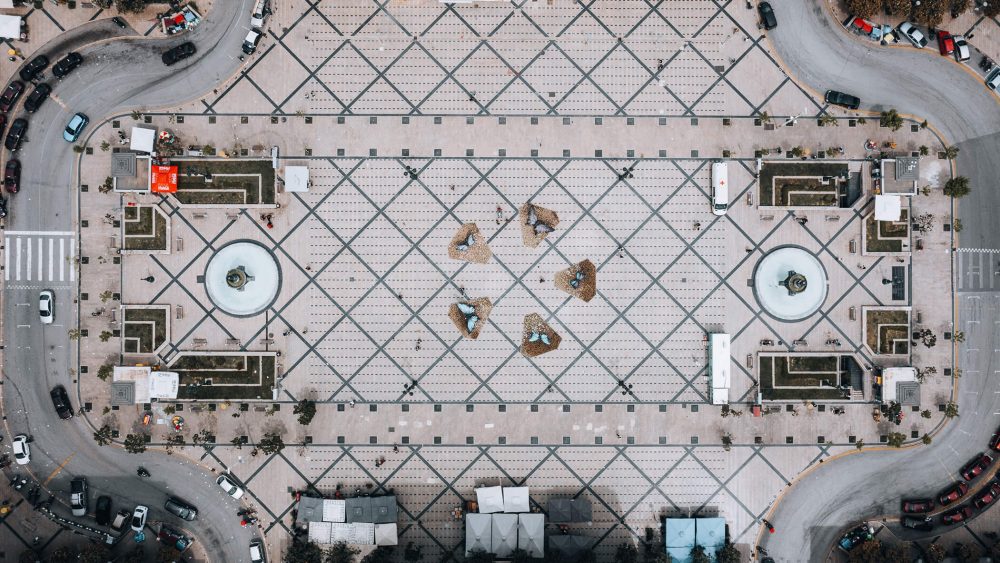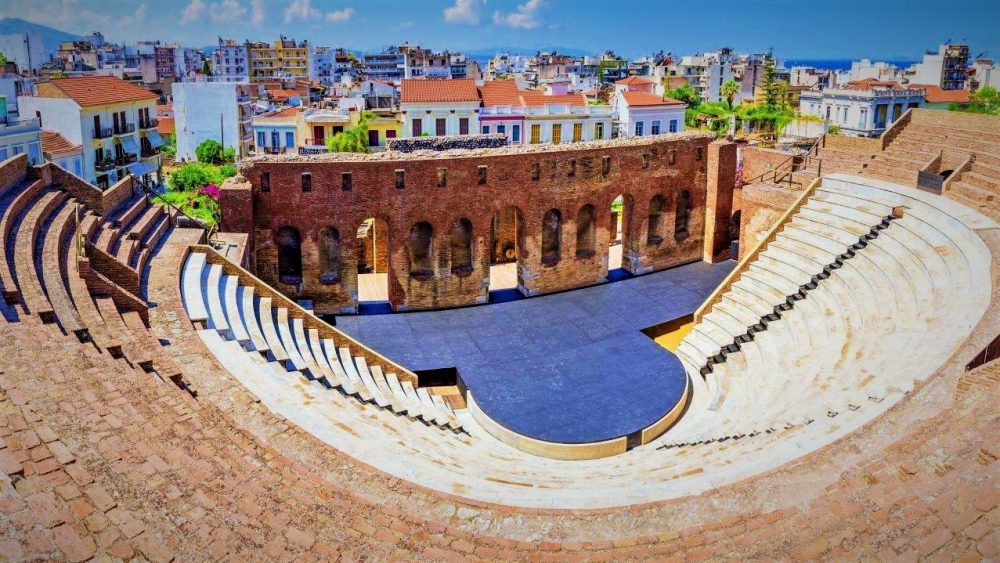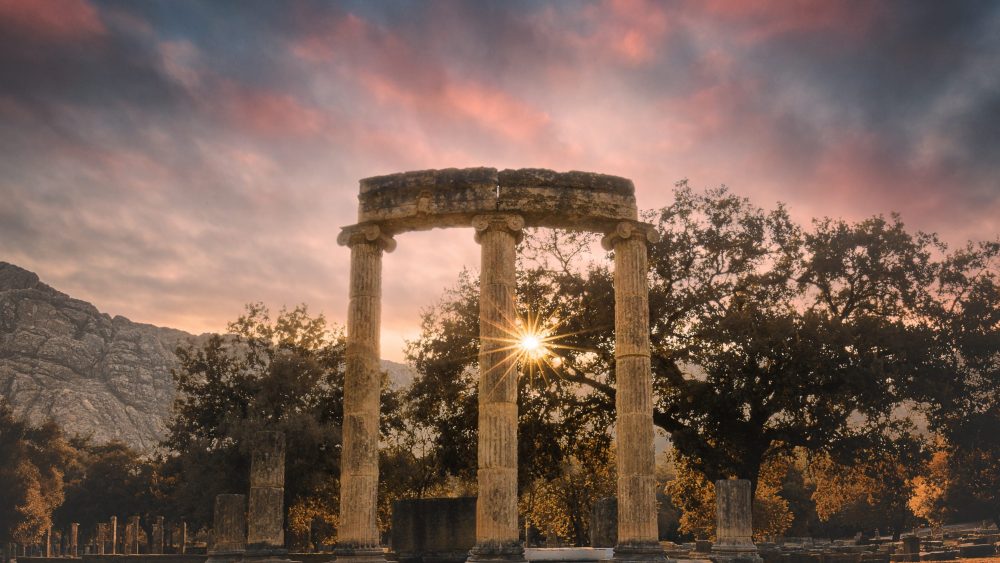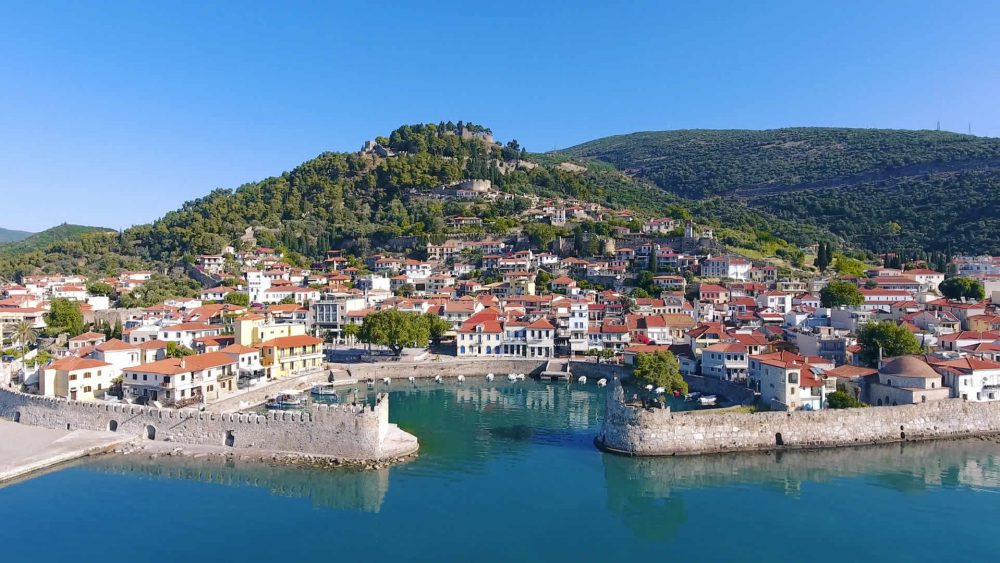Places to visit
Castle

View on Google Maps
The Castle of Patras consists of a wide outer enclosure with towers and bastions, surrounded on three sides by a deep moat.
In the northeast corner, where a natural embankment rises, there is a second (inner) enclosure with strong towers that is also protected by a moat.
Making a separation of the construction phases of the walls and towers of the Castle, in the older period, the Byzantine, the lower parts of the north wall are attributed, which present strong masonry made of large poros and marble, parts of the wall next to the seven-sided front , a large part of the inner court tower, where there is abundant use of ancient material, as well as part of the south wall.
These data show that the basic plan of the Castle is the original Byzantine, which succeeded the ancient citadel and was built largely from its ruins.
Additions of the Franks of the 13th and 14th centuries belong to a large part of the east and south side of the walls, while the Venetians and in the period 1408-1413 are attributed the circular bastion of the west side that dominates the city and part of the inner courtyard.
A small rectangular tower on the south side dates to the Palaeologan period, using ancient material on the main façade and continuous horizontal layers of plinths on the slopes, as well as part of the western precinct with eight high relief arches on the inner side, morphologically related to the Mystras.
Turkish end projects are the configuration of the vaulted entrance, which is protected by a rectangular tower, the configuration of the bastions to receive firearms, the seven-sided large tower of the southeast corner, which shows elaborate construction of large Byzantine artifacts. , distinguished by the sloppiness of construction, and almost all ramparts.
The interior of the Castle is presented today flattened and planted with trees, without visible traces of buildings that once existed (temples, mosques, barracks, etc.). However, no systematic excavation has been carried out to date to reveal traces of the site’s long history dating back to ancient times.
Agios Andreas church

View on Google Maps
The Cathedral Church of Saint Andrew of Patras is a Greek Orthodox basilica in the west side of the city center of Patras, Greece. Along with the nearby old church of St. Andrew it constitutes a place of pilgrimage for Christians from all over the world especially from Russia. The construction of the cathedral (It was established in 1974) has the magnificent but simple style of Byzantine Church. It is the largest church in Greece.
The inside of the cathedral is very nice and characterized by the buildings’ large scale and follows one of several branching traditions of form, function and style that all ultimately derive from the Early Christian architectural traditions established in the Constantinian period. The interior of the church is decorated with Byzantine-style wall paintings and colorful mosaics. It is considered the largest Orthodox church in Greece and has the largest dome in the Balkans. The Cathedral of Saint Andrew (Agios Andreas) is the protector saint of Patra.
Opposite this church, there is an older church, also dedicated to Saint Andrew, that was built in 1835 and was designed by the famous architect Lysandros Kaftatzoglou.
V. Georgiou square

View on Google Maps
The square of Georgios I is located in the heart of the historical center of Patras and was originally called Kalamogdartis as near it, on Corinth Street, was his house. It was officially named Othon Square. It was also called Central, but also Thomopoulou, while after 1862 and the expulsion of Otto it was named National.
However, from the period of the reign of George I, it got the name it maintains until today. In 1902 it was paved and planted with trees, taking the form it had until its recent restoration. The square is adorned with two cast iron fountains with winged lions made in France and installed in 1875.
From the 19th century it was surrounded by many magnificent buildings, some of which survive to this day. On the north side of the square is the Municipal Theater “Apollo”, a brilliant architecture by Ernst Ziller, built in 1871, the former Thomopoulos house, today the Cultural Center of the Bank of Greece, the building of the Commercial Association, the former Papagian house today of the “Hermes” association, etc. Georgiou AD Square is also connected with the history of the city and the nation as all kinds of political and pre-election rallies have taken place in it.
Roman Conservatory

View on Google Maps
To the west of the Castle, above Agios Georgios Square and flanked by Germanou, Sotiriadou and Pantokratoros streets, is the Roman Conservatory of Patras. It must have been erected earlier than the Athens Conservatory (Herodeion 160 AD) and as archaeological research has shown, it ceased to be used after the 3rd AD. century.
It has all the basic parts of the Theater, concave, orchestra, foreground, stage and backstage, and is smaller than the Herodion. As the diameter of its cavity is half that of the Athens Conservatory, it is concluded that it can hold half the spectators (approximately 2,500 in Patras, 5-6,000 in Athens). The hollow of the theater is not carved nor is it supported by any natural support and for its support it was necessary to build a retaining wall that is not preserved in its entire height. The ascent is built of stones and lined with bricks in the isodomic way, and is reinforced at intervals by massive, built in the same way, pillars.
The same construction is observed on the wall of the facade as well as on the partitions of the stage and the backstage. The wall of the stage towards the side of the hollow has eight niches, just as the low wall of the foreground opposite the orchestra has niches. The orchestra is semicircular lined with marble slabs and is separated from the hollow by a marble low chest.
The spectators enter the Conservatory from three built stairs that start from the back of the cavity and end at the foyer. The molding divides the cavity into two parts. From the 3rd AD century until 1889, when it was unveiled, the site of the Conservatory was used differently (tombs were found). In 1889 it was covered with soil and its first revelation was made when rubble was needed to fill the port.
In the 50’s, the architect from Patras, Ioannis Vassilios, took care of the restoration of the Conservatory and the remodeling of the lower cornice. In recent years the Roman Conservatory is used to host cultural and artistic events during the summer.
Archaeological Museum

View on Google Maps
Located on the highway that leads to Athens and being practically a landmark of the city of Patras, the Archaeological Museum dominates by its innovative architectural style and design. Spacious in layout, equipped with various facilities and amenities (conservation laboratories, conference and administration offices, multi-media room, parking lot etc), it accommodates an auditorium, museum-shop and a large hall (200s.m.) for periodical exhibitions. Thematically divided into units, the permanent collection is displayed in three imposing galleries allowing multiple views and good perspective of the exhibits. Exceptional, if not unique, about the Museum interior arrangement is the suspended / elevated passage, which allows overhead and overall view of two galleries. This smart and spectacular in terms of architectural design feature proves particularly useful during presentations and guided tours. More important, it allows ideal inspection of the enormous Roman mosaic floors, which define one of the Museum highlights.
Also outstanding is the building?s facade combining different materials (wood, metal, stone) in full harmony. Its geometry is equally groundbreaking, with a spherical dome of titanium above an artificial pool. In this way, the architect incorporated the element of water perhaps metaphorically alluding to the establishment of Patras by the sea – a strategic location with an impact upon the city s development over the centuries.
The Archaeological Museum of Patras was inaugurated in 2009. Its collections include finds from the broader district of Patras and Western Achaea, covering a wide chronological spectrum from 3000 BC until the 4th century AD. Via the exhibits, local population and students are encouraged to trace their ethnic identity and to familiarize themselves with local history but also with forms of art ranging from glassware to jewellery and mosaic. Moreover, the richness of the Museum permanent collections, with periodical exhibitions on archaeology and visual arts running in parallel, efficiently meets the quests and research interests of specialized scholars. Within the Museum holdings are masterpieces of sculpture, which attract visitors from all over the world. In this respect, the Museum is very much alive, crossing regional cultural borders and constantly in interactive relation with society.
Roman Aqueduct

View on Google Maps
In the Aroe valley, the archaeological site of the Roman and Medieval Aqueducts is placed. Two large water bridges are raised there. The largest of these constitutes part of the Roman Aqueduct of the city which was possibly built during the reign of Emperor Hadrian at the beginning of the second century A.D. It was a big vaulted aqueduct which, after an overground or underground course of 7,5 kilometers, ended to the fringes of the Acropolis, the highest point of the city where, nowadays, the Castle of Patras is placed from where the water was channeled to the city.
In 2006, during the drilling operations of the Short Perimeter Road of Patras and in a distance of 157 meters away from the ruins of the Roman water bridge, a part of the Aqueduct of the city dated to the early post byzantine period, which had a length of 40 meters, a height of 4,15 meters and a width of 1,60 meters, was revealed. It is a water bridge composed of four semicircular arches on the top of which an open water channel is placed, and reinforced with sloping buttresses on both sides.
Ancient Olympia

View on Google Maps
In the valley of the Alfios, at the foot of Kronios hill, the Ancient land of Olympia, the most glorious sanctum of the ancient world, stands as an international symbol of humanity. It was here that the Olympic Games were born in honour of Zeus and were accompanied by the sacred truce that signaled a pause in hostilities between cities. The message of noble emulation and peace is preserved even today by this holy place and delivered through the Olympic Flame to every corner of the earth. The flame symbolizes the glorious triumph of the spirit and the creative power of man that continues to forge civilizations.
The Museum of the History of the Olympic Games does not only aim at simply providing information about the games in antiquity but also at initiating you into the institution of the Olympic Games. It achieves this goal through its exhibits as well as interactive applications. The Archimedes Museum is a thematic museum dedicated to the great scientist. The inventions of Archimedes as well as his contemporaries will excite both young and old.
Kalavryta

View on Google Maps
A place that combines picturesque images and moments of tranquility with monumental sights, natural beauty and activities galore.
Glorious history, enchanting nature, traditional villages, the legendary rack-and-pinion railway, the unreserved hospitality and the ski centre are only a few of the reasons that make atmospheric Kalavrita a popular year-round destination.
The first view of the town is the railway station, where you could be forgiven for thinking you’d walked onto the set of a period drama. In the picturesque town centre you will find shops with traditional products and the Palaiologina stately home, restored to its 15th century glory. It is a short walk from the centre to the old primary school that now houses the Municipal Museum of the Holocaust of Kalavrita. The town’s history is inextricably bound to the time of the Nazi occupation of Greece and at the Sacrificial Ground, a huge cross stands as a reminder of the events.
A visit to this thousand- year- old monastery will naturally awaken your fascination for the stories of the past with its holy relics, records of the Sultan’s decrees, revolutionary banners and flintlocks used when the decision was taken on this very spot to take up arms against the Ottoman oppressors. Under the plane tree of the courtyard monks, priests and brave young men answered the call of history… more
Perched on a rock, it stands proud with the weight of its history and its own considerable contribution to the struggles of the nation. It is adorned with exquisite 17th century frescoes and houses handwritten gospels and other religious artifacts…more
Nafpaktos

View on Google Maps
The Venetian castle is just the beginning of your full acquaintance with the town. As you survey the scene around you, the Venetian towers, the Nautical Lighthouse, Fetihie Mosque and the statues of the freedom fighters G. Anemoyiannis and Miguel de Cervantes are bound to catch your eye.
Ascending from the Holy Metropolitan Temple of St. Demetrios, you will see the famous 1914 town clock. Your path will take you to Stenopazaro, which is teeming with life, and Botsareika, where the impressive Botsaris Tower hosts a permanent exhibition on the Sea Battle of Nafpaktos. The locals actually take to the water to mark its anniversary with a magnificent reenactment as part of a grand-scale celebration. On your tour you should also visit Papaharalabios Library, Farmakis Museum and then take a well-earned sip of fresh mountain waters from the Fountain of Love.
Ano Hora, where the celebration of Chestnut and Tsipouro is held every year, Platanos with its interesting Folklore museum, Kato Hora, Terpsithea, Elatou, and Ampelakiotissa are just a few of them waiting to be discovered.

